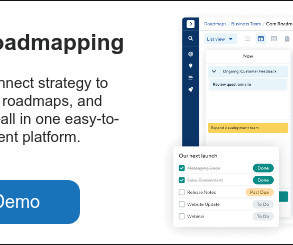Why is Idea Management Important?
ProductPlan
MARCH 18, 2022
But coming up with ideas is the easy part. For this reason, product teams need to develop a process for idea management. The two biggest challenges for idea management are efficiently and consistently recording and organizing ideas followed by actually making good use of them. Ideas are fleeting.















Let's personalize your content